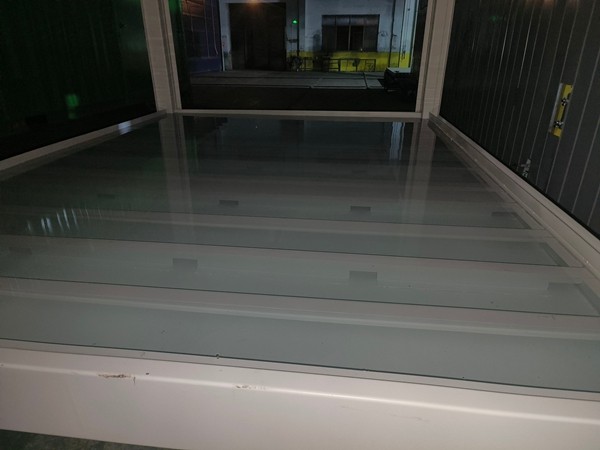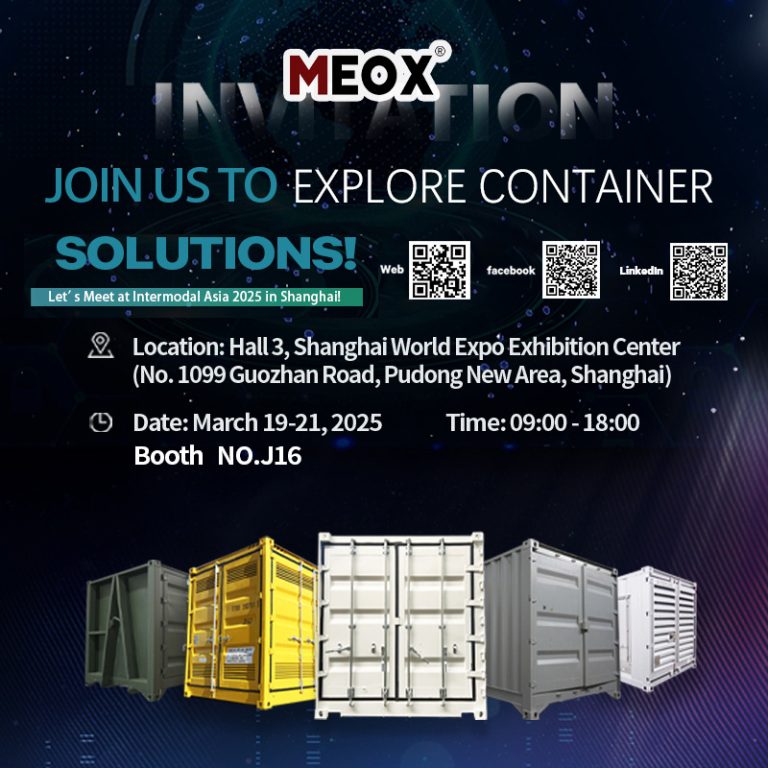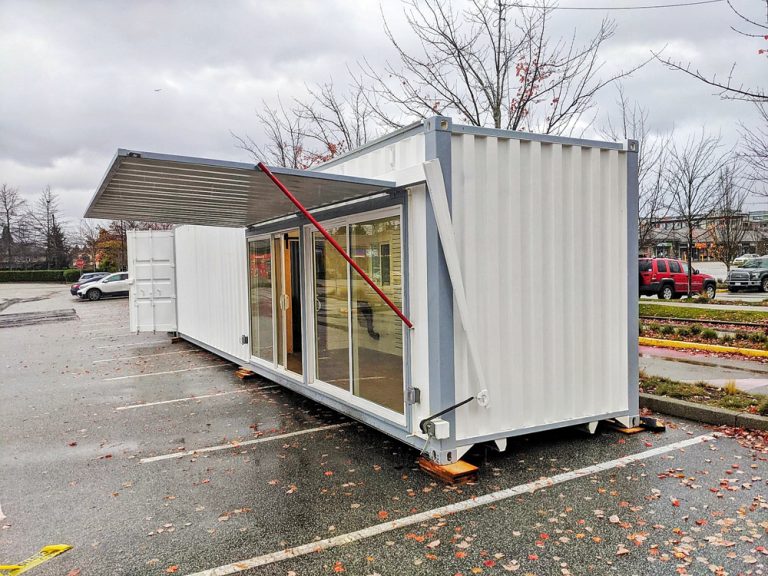Understanding Mobile Solar Containers
Let’s start with the basics: What exactly is a mobile solar container?
A mobile solar power container is a type of container-type substation, and in terms of volume, a solar PV container is essentially the same as a civil-constructed substation. The solar container represents a significant advancement in new technologies, materials, and equipment for smart substations. In the field of new energy applications, one of the application scenarios for photovoltaic power generation is the use of prefab substations. The application scenarios for photovoltaic energy storage containers are numerous, including commercial and industrial energy storage, residential energy storage, and off-grid energy storage.
The mobile solar PV container comes with a set of electrical equipment prefabricated in the factory. It offers various solar array capacities and can be customized according to the required design drawings. Prefabricated substation containers for the photovoltaic industry typically consist of the container body, related equipment panels, racks, other distribution control equipment, and auxiliary operation systems such as lighting, air conditioning, and security systems. These components are prefabricated based on the specific photovoltaic and distribution project requirements.


How Do Mobile Solar Containers Work?
1. The Container as a Solar Power Hub
The core innovation lies in the industrial-grade shipping container itself, which is transformed into a solar energy powerhouse:
- Structural Integrity:
Made from corrosion-resistant steel, the container withstands extreme weather (e.g., 130mph winds, -30°C to 50°C temperatures).
Reinforced corners and lockable doors protect against physical damage and theft.
- Pre-Installed Solar Array:
Solar panels are factory-mounted on foldable racks inside the container walls.
During transport, panels fold inward to avoid damage; on-site, they deploy outward in under an hour, expanding coverage by 3–5x.
2. Deployment: From Transport to Power Generation in Hours
The container’s mobility is central to its value. Here’s how it transitions from shipping to operation:
- Transport-Ready Design:
Folded solar panels fit entirely within the container, meeting standard shipping dimensions (20ft/40ft).
Corner castings enable easy loading/unloading.
- Rapid Setup:
Position the container.
Unfold panels using a hand crank or motorized system (50–90 minutes).
Connect to devices via built-in outlets—no on-site electrical work.
3. Built-In Electrical Infrastructure
The container houses all critical components behind its steel walls:
- Pre-Wired Systems:
Inverters, transformers, and circuit breakers are factory-installed along one wall.
Color-coded wiring reduces setup errors—just plug into appliances or grids.
- Climate Control:
Ventilation fans and insulation maintain safe temperatures for electronics, even in deserts or polar regions.
4. Purpose-Built for Tough Environments
The container’s design directly addresses challenges in high-impact applications:
- Mining Sites:
Dust-proof seals on doors/vents protect internal components.
Exterior coating resists chemical corrosion from mine tailings.
- Coastal Areas:
Saltwater-resistant paint and stainless steel hinges prevent rust.
An elevated base (optional) keeps equipment dry during floods.
- Arctic Zones:
Double-walled insulation retains heat, ensuring panels generate power even at -25°C.
Key Advantages Over Traditional Energy Systems
Why are mobile solar containers gaining traction? Let’s compare them to conventional solutions:
- Portability & Rapid Deployment
Traditional substations take months to build. A mobile unit? It’s ready in hours. With foldable designs (like the folding solar PV container), setup requires just 4–6 people and under an hour. Sloped designs (up to 1% gradient) ensure stability on uneven terrain.
- Durability & Low Maintenance
Built to withstand harsh environments
Corrosion-resistant steel frames
Fire-retardant insulation
30+ year lifespan with minimal upkeep
Snow or dust accumulation? Foldable panels shed debris automatically, reducing power loss by up to 25% compared to fixed arrays.
- Eco-Friendly Energy
By replacing diesel generators, a single 100kW solar container cuts ~150 tons of CO₂ annually. Add-on: Noise-free operation protects local ecosystems.
- Versatile Applications
From remote villages to construction sites, here’s where they excel:
Emergency Power: Disaster relief, hospitals, refugee camps.
Industrial Use: Mining, agriculture, telecom towers.
Residential: Off-grid homes, vacation cabins.
Commercial: Shopping malls, data centers.
Before investing, ask these questions:
- Power Needs: What’s your daily energy consumption (kWh)?
- Location: Is the site prone to extreme weather?
- Scalability: Will your energy demands grow?
- Budget: Consider the total cost of ownership, not just the upfront price.
The MEOX mobile solar containers have the following advantages
- The MEOX solar PV container series can overcome the limitations of traditional energy supply methods. With its lightweight and convenient features, it opens up new paths for energy applications, providing a more environmentally friendly, economical, and flexible solution for remote and island regions, thus promoting the extensive application and development of renewable energy.
- The mobile solar PV container comes with a set of electrical equipment prefabricated in the factory. It offers various solar array capacities and can be customized according to the required design drawings. Prefabricated substation containers for the photovoltaic industry typically consist of the container body, related equipment panels, racks, other distribution control equipment, and auxiliary operation systems such as lighting, air conditioning, and security systems. These components are prefabricated based on the specific photovoltaic and distribution project requirements.
- The folding solar PV container is easy to install, requiring only 4-6 people to complete it. Its folding time is just 50 minutes, and its maximum slope is 1%. When placed in an outdoor environment, the container boasts high structural strength, excellent fire and thermal insulation properties, and strong corrosion resistance, giving it a lifespan of over 30 years.
The folding solar PV container meets the modular needs for photovoltaic power generation, management frameworks, and equipment. Its foldable design is a key advantage, allowing it to be folded when not in use to save space and facilitate transportation. Traditional photovoltaic modules often suffer power losses due to snow and dust accumulation in winter, making the flexible folding solar PV container an ideal solution to this issue. The folding solar PV container has clear advantages in terms of cost and maintenance, making it a popular choice in the photovoltaic industry.
Final Thoughts
Mobile solar containers aren’t just a niche product—they’re a scalable, future-proof solution for energy independence. Whether you’re a homeowner seeking backup power or a project manager needing temporary electricity, their flexibility and efficiency make them worth exploring.
By understanding their benefits and applications, you’re now equipped to make informed decisions about integrating clean energy into your life or business. Ready to take the next step? Consult MEOX to tailor a system to your unique needs.






